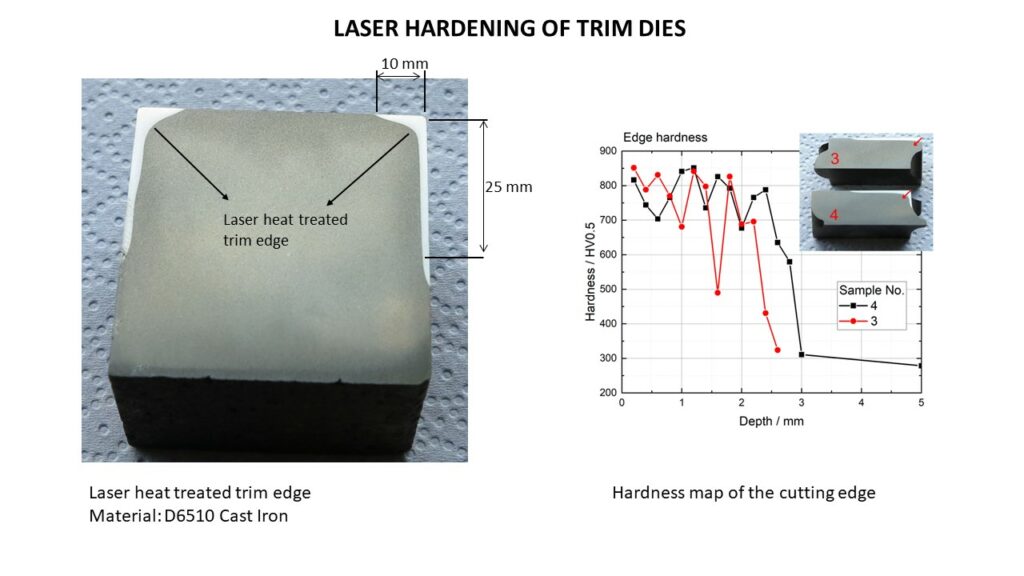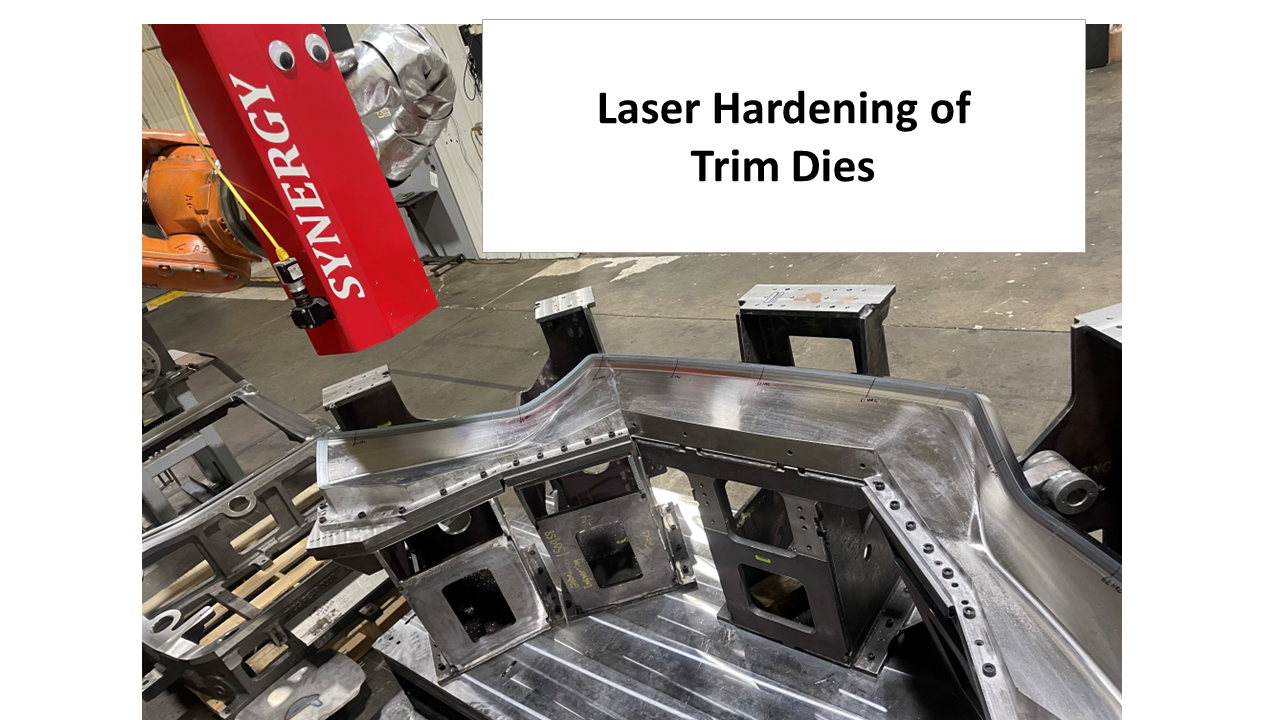Conventional heat treating process for trim dies involved leaving an extra stock of material on the die, which was then subjected to induction or flame heat treating. After heat treatment, the dies were machined back to the required tolerances. While this approach had been employed for many years, it presented several challenges and limitations. One of the primary drawbacks of the conventional process was the need to machine the dies after heat treatment. This added extra time, cost, and complexity to the production process, reducing overall efficiency.
While laser heat treating offered numerous advantages, applying it to trim edges presented a unique set of challenges. One of the key difficulties was the potential for edge rolling or melting during the heat treating process. Achieving uniform heat distribution without compromising the structural and dimensional integrity of the dies required a comprehensive and precise approach.
Synergy’s Innovation: Multi-Point Temperature Control System (MPTC)
Synergy’s commitment to overcoming challenges led to the development of the Multi-Point Temperature Control System (MPTC). This groundbreaking system enables Synergy to regulate laser power and temperature distribution over the entire trim edge, ensuring consistent and controlled heat treatment without causing edge rolling or melting.

Advantages of Laser Heat Treating Trim Profiles by Synergy
The introduction of laser heat treating for trim edges by Synergy has brought a multitude of advantages to the automotive die production industry:
1. Enhanced Precision: The MPTC system ensures accurate and uniform heat distribution, allowing for precise control of the heat treating process, resulting in dies that meet exact tolerances without the need for additional machining.
2. Increased Efficiency: By eliminating the post-heat treatment machining step, the production process becomes more streamlined, reducing production time and costs significantly.
3. Improved Die Performance: Laser heat treating results in extremely consistent hardness often within +/- 1 HRC which is not possible in conventional heat treating techniques.
4. Eco-Friendly: Laser heat treating is a more environmentally friendly alternative compared to traditional methods, as it consumes less energy and generates fewer emissions.
Conclusion
Synergy’s introduction of laser heat treating for automotive dies on a large scale has been a game-changer for the industry. Through their innovative Multi-Point Temperature Control System, they have successfully overcome the challenges associated with laser heat treating on trim edges, setting new standards for precision, efficiency, and performance in die production. With their commitment to pushing the boundaries of technology, Synergy continues to shape the future of automotive manufacturing, ensuring the industry remains at the forefront of innovation.

